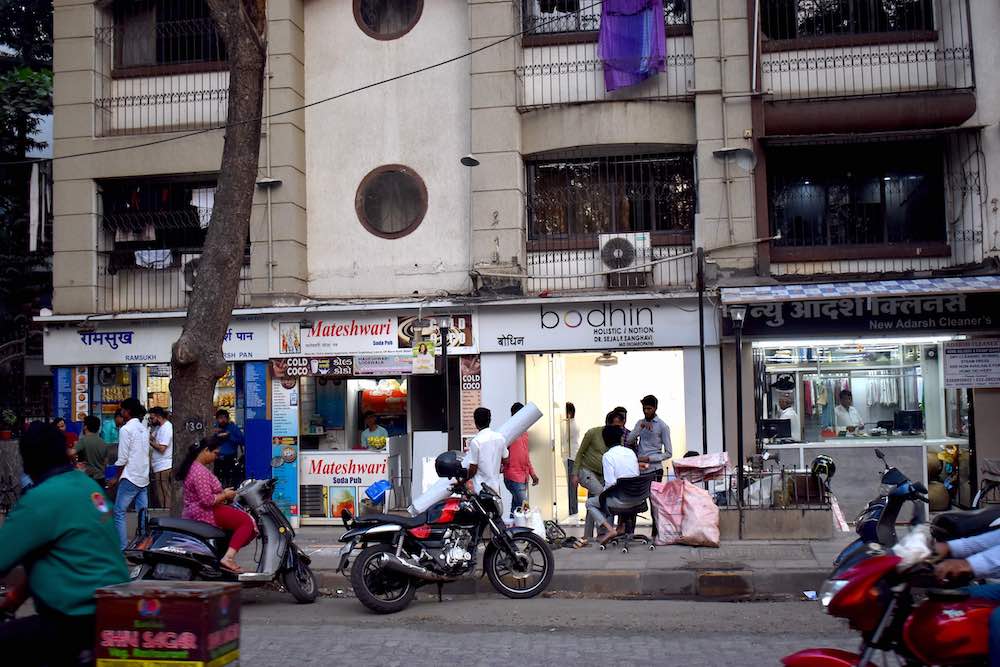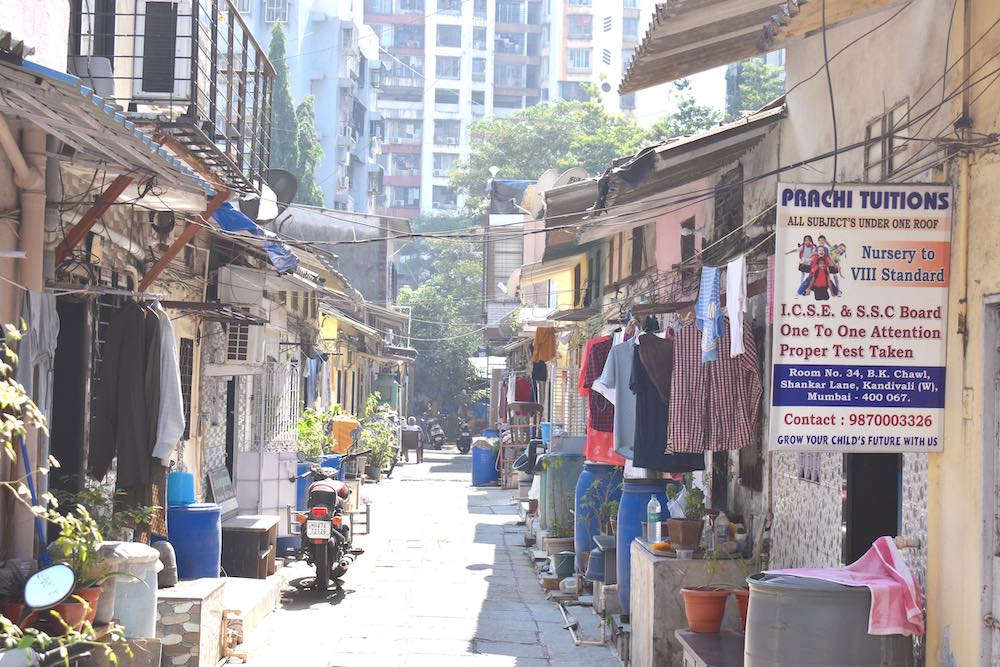What Canadian Cities Can Be taught from My ‘Intense’ Mumbai Neighbourhood

As a Canadian ex-pat in Mumbai, my day by day life right here is totally different from my life again dwelling in nearly each respect. However some of the putting variations is how intense the neighbourhoods are.
I don’t fairly imply “intense” within the conventional sense, although life on this metropolis — dwelling to twenty million in an space the scale of Edmonton — can definitely really feel vigorous and energetic. I’m speaking a few extra technical definition of depth used within the city planning world.
For planners, depth describes the focus and variety of actions and other people one encounters in a neighbourhood. The idea is on the coronary heart of city sustainability frameworks just like the 15-minute metropolis and ‘full streets,’ designed to place folks again on the centre of city design after generations of planning our cities round automobiles.
The pondering goes that we’ve prioritized those that can afford to personal automobiles over those that can’t for a lot too lengthy. Each the 15-minute metropolis and ‘full streets’ name for a variety of use varieties in proximity to at least one one other, related by well-maintained lively transportation networks. This provides residents quick access to most of their day by day wants.
I reside in a suburb of Mumbai, in a neighbourhood that I’d describe as intense by city planning requirements. Inside steps of my entrance door, I can seize a tasty sev puri (crispy wafer topped with potatoes, onions, tomatoes, tamarind chutney and crunchy sev noodles), a freshly baked pastry, conventional Indian sweets, recent juice or coconut water or a creamy, candy chai.
Inside a few hundred metres, there are parks, temples and church buildings. There are vegetable distributors and seasonal fruit carts; wholesale distributors promoting pulses and spices; and a dairy promoting recent milk, yogurt and paneer. There are dentists, docs, ayurvedic clinics, pharmacists, realtors, banks, hair salons, clothes retailers, colleges, gyms, dry cleaners and a grocery retailer. Plus stalls housing cobblers, tailors and recent flower distributors.
Interspersed all through is a spread of housing varieties: mid-rise condo buildings that dominate the panorama, just a few clusters of excessive rises and chawls (neighborhood housing) and a handful of indifferent properties.
Residing in an intense neighbourhood is one among my favorite elements of life in India. I like getting virtually in all places I have to go on foot. I like the sights I see alongside the best way, and the pleasant interactions with native distributors, which, in my early days right here, gave me a way of belonging that shouldn’t be undervalued.
There are all the time folks round, and even a secular errand or stroll across the neighbourhood isn’t boring. So far as I’m involved, past the advantages that neighbourhoods like mine present, they’re simply extra enjoyable to reside in, too.



Images by Elizabeth Downey.
Why intensify?
One key to intensifying cities is offering housing in present built-up areas, which limits sprawl and retains residents near the locations they should go.
Cities globally are striving to implement such frameworks, and with good cause. Human-centric communities allow municipalities to ship on main precedence areas like housing affordability, local weather change, biodiversity and public well being. Actually, there are few domains that provide higher alternative to deal with these converging crises than city design.
Take local weather change, for instance: 24 per cent of Canada’s complete greenhouse fuel emissions come from the transportation sector, nearly all of which is street transportation. We merely gained’t obtain our emission discount targets with out making it simpler for folks to depart their automobiles behind, or forego proudly owning them altogether. (Electrical autos scale back tailpipe emissions, however gained’t alleviate different environmental, human well being and societal penalties of car-centric existence.)
Within the midst of nationwide housing crises, intensification additionally permits cities to extend their reasonably priced housing inventory with out increasing the city footprint outwards. That is in stark distinction to present approaches to housing provision in jurisdictions throughout Canada.
In Calgary, near 75 per cent of recent housing is being constructed on town’s sprawling outskirts. In Ontario, whereas the province is going through a serious backlash for opening up protected greenbelt areas for housing growth, 319 acres of farmland are already being misplaced every day, primarily for housing building. Such land use change is especially alarming as a result of it is irreversible: as soon as we pave over land for suburban growth, there’s no getting it again.
Concentrating city development inward, however, protects the dear agricultural sources that allow us to develop meals domestically, which is a important instrument to mitigate hovering meals costs, now and into the long run. Defending peri-urban areas — urban-to-rural transition zones on the outskirts of regional centres — additionally means defending ecosystems and the important capabilities they serve, like sequestering carbon from the ambiance, mitigating in opposition to excessive warmth and floods, preserving water high quality and offering wildlife habitat at a time when biodiversity in Canada is critically threatened.

Picture by Elizabeth Downey.
Intensification permits progress on public well being and fairness precedence areas too. Ease of use of lively transportation is related to lowered charges of preventable illness, whereas much less vehicular site visitors means higher air high quality and safer streets. Extra pedestrian site visitors interprets into greater revenues for native companies. Intensification makes our cities extra equitable by offering wider entry to every part from employment and academic alternatives, to inexperienced areas and cultural actions, along with reasonably priced housing.
Regardless of these advantages, intensification stays a perpetual problem for Canadian cities. Partially, that’s as a result of human-centric city design paradigms bump up in opposition to many years of car-centric city design, and ingrained concepts about what makes a neighbourhood fascinating. Contemplate how a lot of our cities’ land is roofed by sprawling areas of indifferent properties, related to one another and core areas primarily by street. Zoning that segregates residential from different makes use of retains folks at a distance from the locations they should go, additional entrenching our reliance on automobiles.
Huge swathes of city areas, together with 81 per cent of residential land in Vancouver, are zoned solely for single
-family properties, which limits housing variety and affordability. Inside areas zoned for single household housing, there are sometimes additional restrictions dictating the kind of properties allowed, akin to minimal constructing and lot sizes. In consequence, such areas are typically dominated by giant properties on giant tons, which drives up dwelling values and successfully costs out lower-income households. This has important fairness implications, significantly for racialized teams. The place zoning codes are permissive, intensification initiatives usually meet opposition on the a part of residents in search of to “protect the character” of neighbourhoods.
We should essentially change the best way we develop cities
This isn’t to counsel that Canadian cities might or ought to try to duplicate Mumbai. In spite of everything, there’s a distinctive set of socioeconomic, demographic and political situations that give rise to the actual sort of depth one experiences there.
Nonetheless, quick access to a variety of products and providers and numerous housing choices inside neighbourhoods, in addition to the even handed and artistic use of house, are key parts of sustainable — and reasonably priced — cities. Their significance will solely improve as city populations rise quickly within the coming years, and but they’re all areas through which Canadian cities are inclined to lag.
A lot of our collective capability to confront crises of local weather change and affordability, and to guard biodiversity and meals safety, depends on essentially altering the best way we develop our cities.
Like all transformations, this requires motion from the top-down (on this case, by way of instruments like zoning codes and guarded space laws) and from the bottom-up — each of which depend on shifts in mindset about what our neighbourhoods are for, what they need to appear like and the way we get round them.
As we rethink our cities, let’s not be restricted by what we all know in the present day.
Let’s be impressed by the probabilities for neighbourhoods that foster extra equitable societies. Neighbourhoods that improve, relatively than hinder, progress on local weather change and conservation, and that replicate a deeper concern for future generations.
For all of that, a bit of little bit of depth can go a good distance. ![]()




